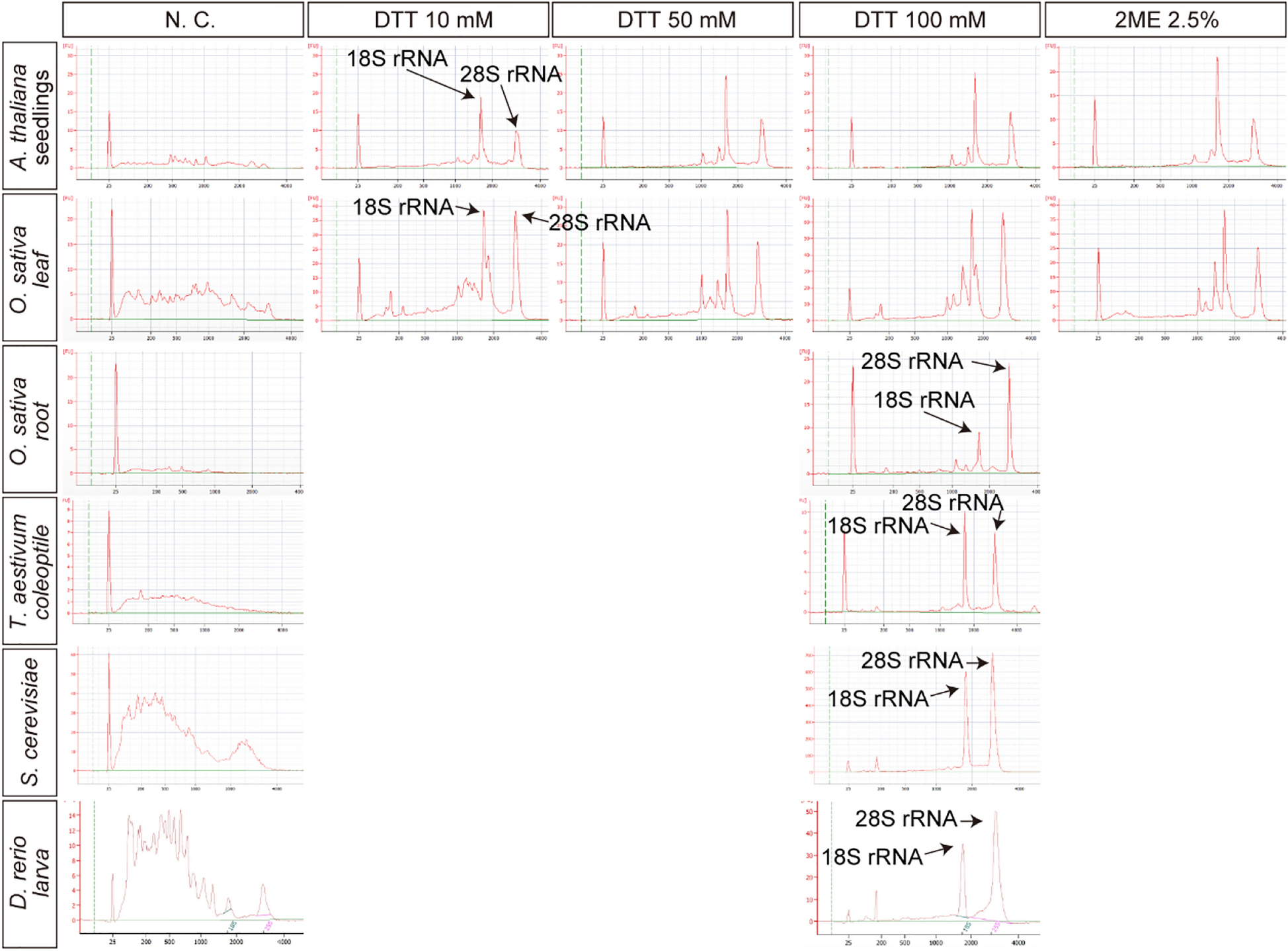Quantification of gene expression such as RNA-Seq is a popular approach to study various biological phenomena. Despite the development of RNA-Seq library preparation methods and sequencing platforms in the last decade, RNA extraction remains the most laborious and costly step in RNA-Seq of tissue samples of various organisms. Thus, it is still difficult to examine gene expression in thousands of samples.
Researchers at Ryukoku University have developed Direct-RT buffer in which homogenization of tissue samples and direct-lysate reverse transcription can be conducted without RNA purification. The DTT concentration in Direct-RT buffer prevented RNA degradation but not RT in the lysates of several plant tissues, yeast, and zebrafish larvae. Direct reverse transcription on these lysates in Direct-RT buffer produced comparable amounts of cDNA to those synthesized from purified RNA. To maximize the advantage of the Direct-RT buffer, the researchers integrated Direct-RT and targeted RNA-Seq to develop a cost-effective, high-throughput quantification method for the expressions of hundreds of genes: DeLTa-Seq (Direct-Lysate reverse transcription and Targeted RNA-Seq). The DeLTa-Seq method could drastically improve the efficiency and accuracy of gene expression analysis. DeLTa-Seq analysis of 1056 samples revealed the temperature-dependent effects of jasmonic acid and salicylic acid in Arabidopsis thaliana.
Reducing reagents inhibited RNA degradation in plant and animal tissue lysate
Bioanalyzer electropherograms of purified RNA from tissue lysates (A. thaliana seedlings, O. sativa leaves, O. sativa root, T. aestivum coleoptile, S. cerevisiae, and D. rerio) containing the reducing reagents dithiothreitol (DTT) and 2-mercaptoethanol (2ME). The columns indicate the concentrations of the reducing reagents in the homogenization buffers. N.C. represents no reducing reagents in the buffers (negative control)
The DeLTa-Seq method can realize large-scale studies using thousands of animal, plant, and microorganism samples, such as chemical screening, field experiments, and studies focusing on individual variability. In addition, Direct-RT is also beneficial for gene expression analysis in small tissues from which it is difficult to purify enough RNA for the experiments.
Kashima M, Kamitani M, Nomura Y, Mori-Moriyama N, Betsuyaku S, Hirata H, Nagano AJ. (2022) DeLTa-Seq: direct-lysate targeted RNA-Seq from crude tissue lysate. Plant Methods 18(1):99. [article]





